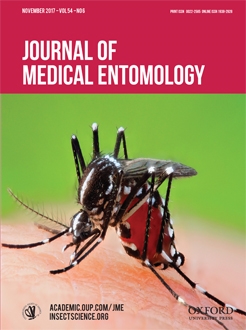Anopheles arabiensis (Patton; Diptera: Culicidae) is a major malaria vector in the southern African region. In South Africa, effective control of this species using indoor-based interventions is reduced owing to its tendency to rest outdoors. As South Africa moves towards malaria elimination there is a need for complementary vector control strategies. One of the methods under consideration is the use of the sterile insect technique (SIT). Key to the successful implementation of an SIT programme is prior knowledge of the size and spatial distribution of the target population. Understanding mosquito population dynamics for both males and females is critical for efficient programme implementation. It is thus necessary to use outdoor-based population monitoring tools capable of sampling both sexes of the target population. In this project mosquito surveillance and evaluation of tools capable of collecting both genders were carried out at Mamfene in northern KwaZulu-Natal Province, South Africa, during the period January 2014 to December 2015. Outdoor- and indoor-resting Anopheles mosquitoes were sampled in three sections of Mamfene over the 2-yr sampling period using modified plastic buckets, clay pots and window exit traps. Morphological and molecular techniques were used for species identifications of all samples. Wild-caught adult females were tested for Plasmodium falciparum (Welch; Haemosporida: Plasmodiidae) infectivity. Out of 1,705 mosquitoes collected, 1,259 (73.8%) and 255 (15%) were identified as members of either the Anopheles gambiae complex or Anopheles funestus group respectively. An. arabiensis was the most abundant species contributing 78.8% of identified specimens. Mosquito density was highest in summer and lowest during winter. Clay pots yielded 16.3 mosquitoes per trap compared to 10.5 for modified plastic buckets over the 2-yr sampling period. P. falciparum infection rates for An. arabiensis were 0.7% and 0.5% for 2014 and 2015, respectively. Logistic regression analysis showed an association between An. arabiensis catches with Section and season of collection but not with sex and collection methods. These data confirmed the presence of a perennial An. arabiensis population at Mamfene and constitute the first records of P. falciparum infective An. arabiensis from South Africa, confirming this species as a major vector in the malaria endemic provinces of the country.
How to translate text using browser tools
6 September 2017
Population Dynamics and Plasmodium falciparum (Haemosporida: Plasmodiidae) Infectivity Rates for the Malaria Vector Anopheles arabiensis (Diptera: Culicidae) at Mamfene, KwaZulu-Natal, South Africa
Leonard C. Dandalo,
Basil D. Brooke,
Givemore Munhenga,
Leanne N. Lobb,
Jabulani Zikhali,
Sifiso P. Ngxongo,
Phineas M. Zikhali,
Sipho Msimang,
Oliver R. Wood,
Mohlominyana Mofokeng,
Eunice Misiani,
Tobias Chirwa,
Lizette L. Koekemoer
ACCESS THE FULL ARTICLE
It is not available for individual sale.
This article is only available to subscribers.
It is not available for individual sale.
It is not available for individual sale.

Journal of Medical Entomology
Vol. 54 • No. 6
November 2017
Vol. 54 • No. 6
November 2017
clay pot
entomological surveillance
residual malaria
sterile insect technique
vector incrimination




